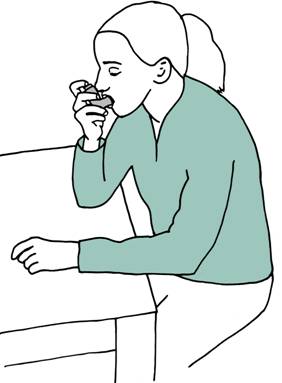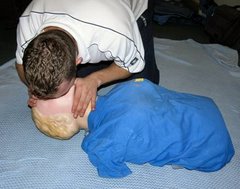Asthma
The main priorities are to calm and reassure the casualty, treat the asthma attack and maintain the casualty's airway.
Recognition:
- Difficulty in breathing, with a very long breathing-out phase.
- Wheezing when the casualty breathes out.
- Difficulty speaking.
- Signs of hypoxia (low blood oxygen) such as grey-blue lips, earlobes and nailbeds.
- Distress and anxiety.
- Coughing.
- Eventually the casualty may become unconscious and stop breathing.
- Calm and reassure the casualty.
- Ask the casualty to take a puff of their reliever inhaler.
- Ask the casualty to breathe slowly and deeply.
- Let the casualty adopt the most comfortable position, usually sitting. Do not let the casualty lie down.
- A mild asthma attack should ease within 3 minutes - if not, ask the casualty to take a second dose from their inhaler.
- Ring for an ambulance if:
- this is the casualty's first ever asthma attack.
- the inhaler has no effect after 5 minutes.
- the casualty is getting worse.
- breathlessness makes talking difficult.
- the casualty is becoming exhausted.
- Be prepared to give resuscitation if the casualty stops breathing.



